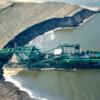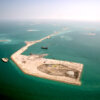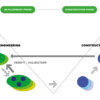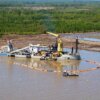Systems Engineering is a worldwide accepted tool for the design of complex projects. The essence of Systems Engineering is that it is interdisciplinary, focusses on defining customer needs and required functionality early in the development cycle and is subject to a structured evaluation and feedback system as this cycle rolls out.
Client’s needs
The client’s needs and functionality requirements are input to the design and feasibility analysis of the project. Steps in the development cycle are evaluated at certain pre-defined moments and if needed adjusted. Such adjustments may include the design itself, but also the needs and functional requirements formulated for the project.
Structured evaluation and feedback throughout the development cycle is aimed to lead to the most effective and economical solution of the client’s needs. As the development cycle proceeds the outline of the system becomes increasingly detailed.
Development cycle
To make maximum use of the appropriate expertise, the integrated approach may enlist advisors and contractor specialists at an early stage of the development cycle. This will ensure that the needs of the client and stakeholders are satisfied in a high quality, trustworthy, cost-efficient and schedule-compliant manner throughout a systems’ entire life cycle.
This systems engineering process is usually comprised of the following seven tasks:
- State the problem;
- Investigate alternatives;
- Model the system;
- Integrate;
- Launch the system;
- Assess performance, and;
- Re-evaluate.
These functions are summarised with the acronym SIMILAR: State, Investigate, Model, Integrate, Launch, Assess and Re-evaluate. It is important to note that the Systems Engineering Process is not sequential and functions are performed in a parallel and iterative manner.
Boundary conditions
The transformation of the functional requirements of a project into a technical design is directed by the boundary conditions and the construction method. These boundary conditions are established by project data such as soil and environmental conditions.
Given the project’s boundary conditions and the construction methods, the feasibility of the design must be judged by the criteria established for its ultimate use. If these criteria are not met, then the project may have to be re-considered.















